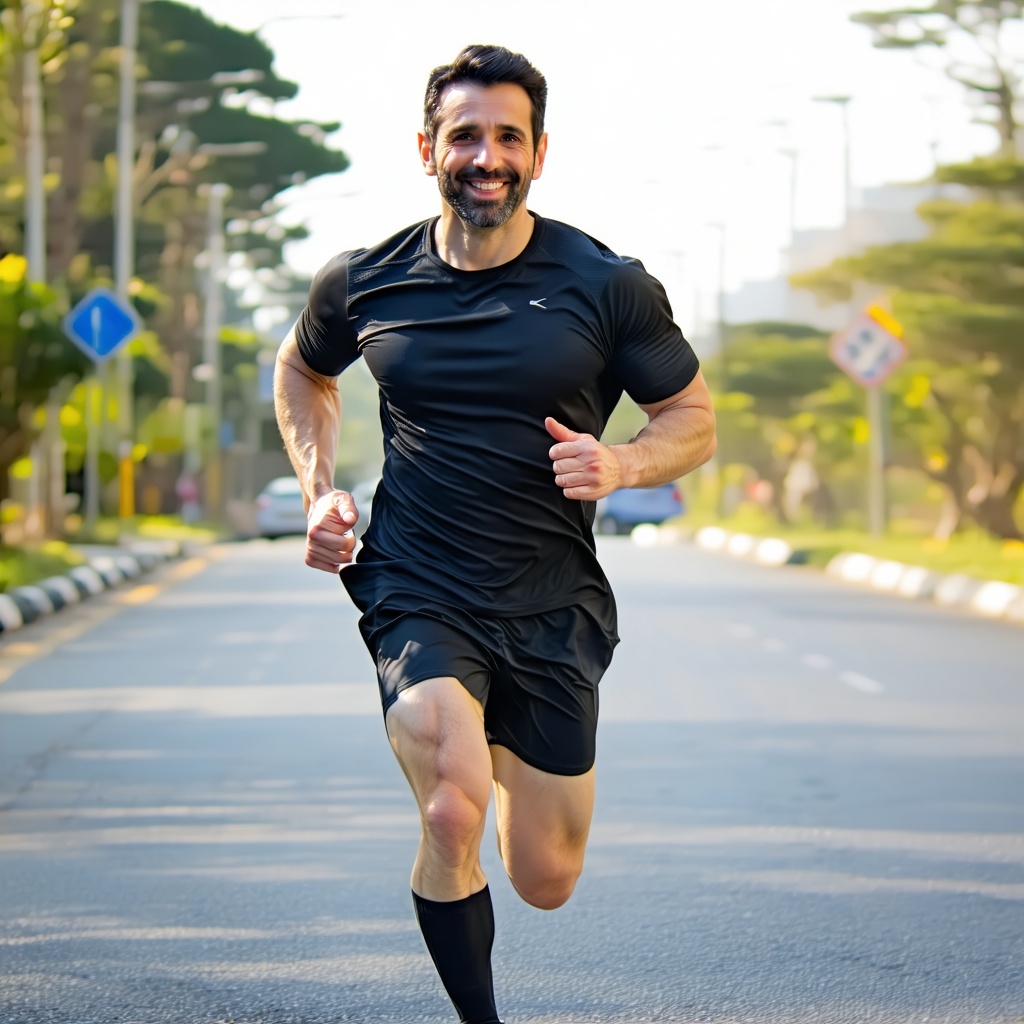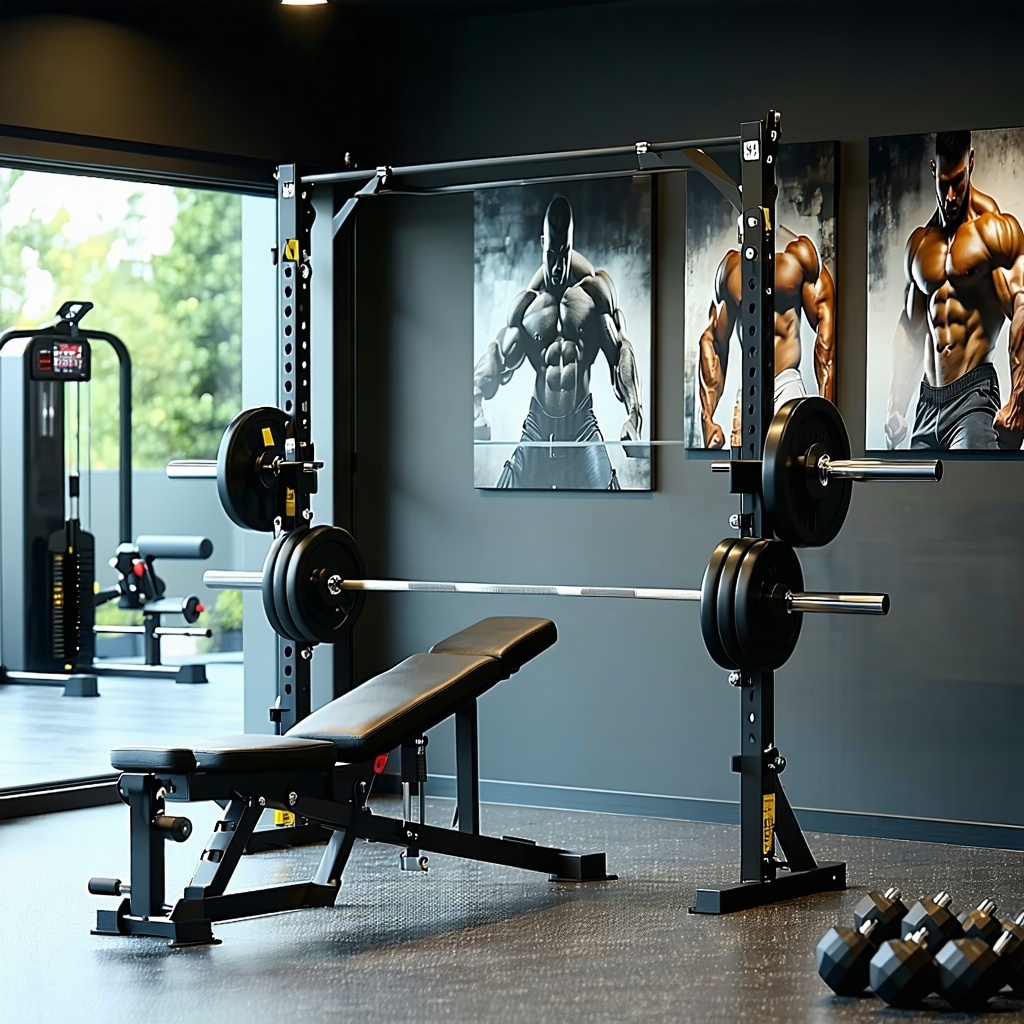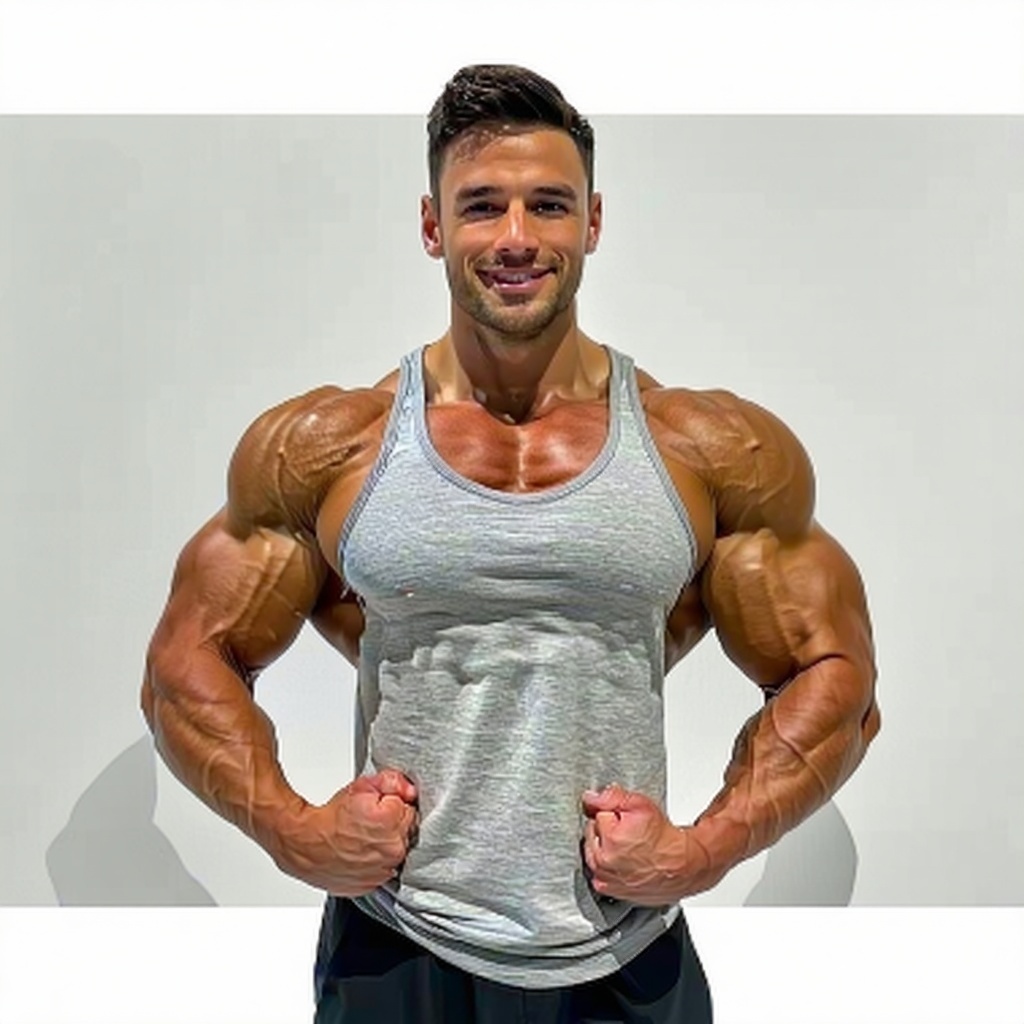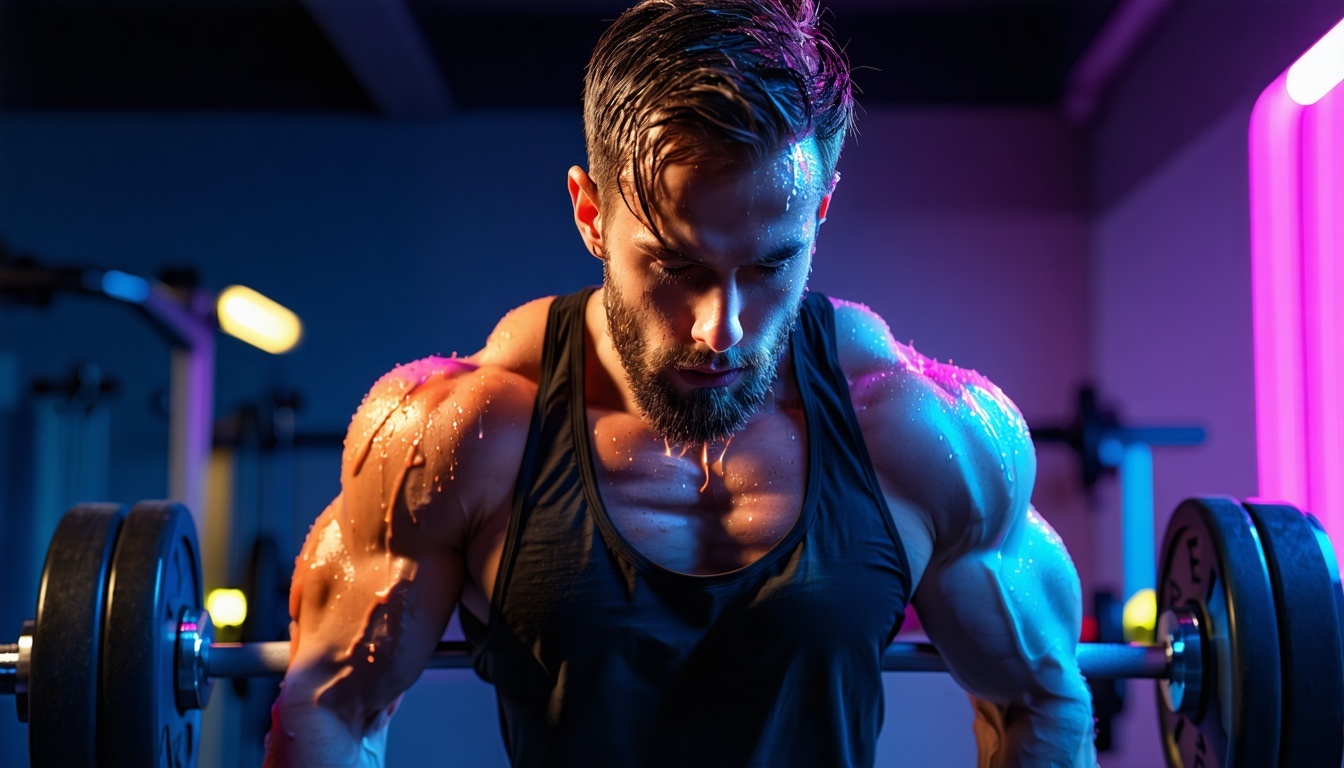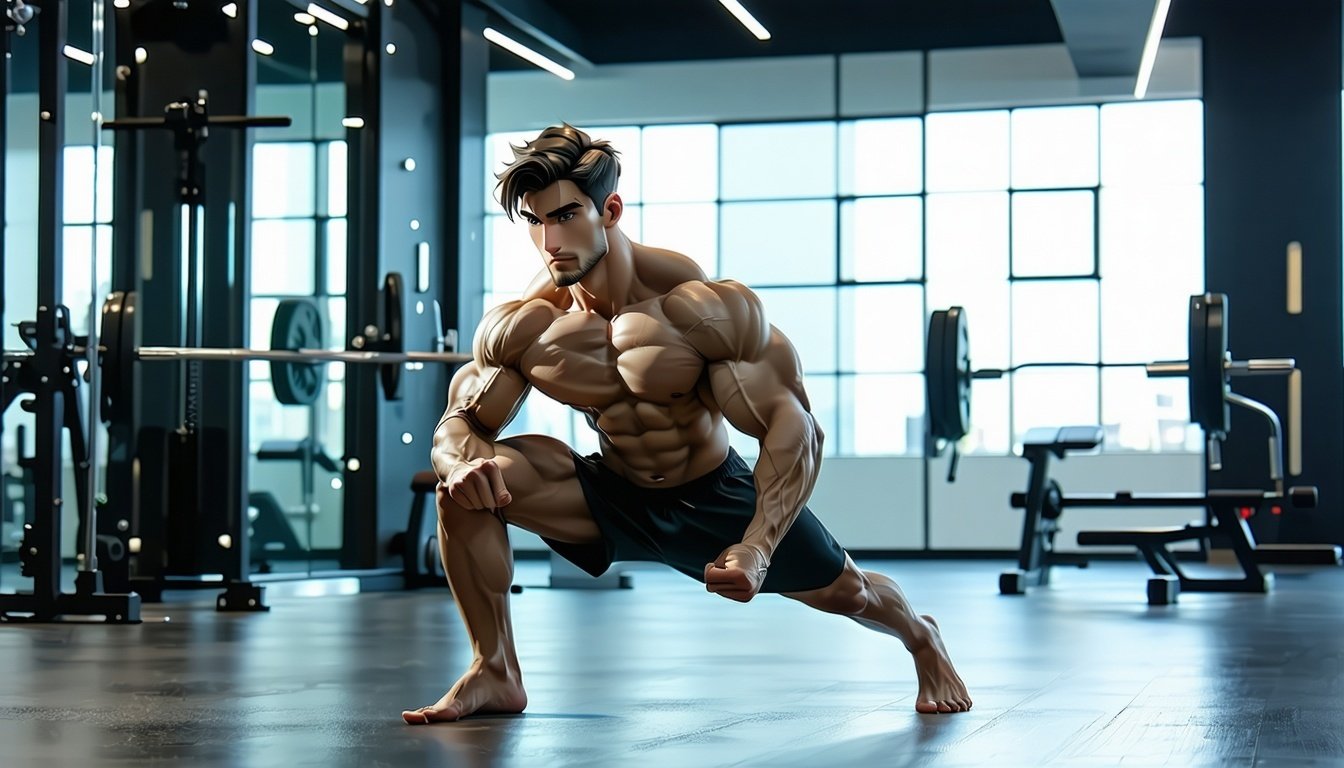The Beginner's Push-Pull-Legs Introduction: Your First Specialization Split
You've mastered the basics with full-body training, progressed through upper/lower splits, and now you're ready for the next evolution in your muscle-building journey: the push-pull-legs split. This isn't just another workout routine – it's your introduction to true muscle specialization, where you'll learn to target specific muscle groups with laser focus while building the work capacity needed for more advanced training.
The push-pull-legs (PPL) split represents a fundamental shift in how you approach training. Instead of working your entire body or dividing it simply into upper and lower halves, you're now organizing your training around movement patterns and muscle functions. Push muscles (chest, shoulders, triceps) work together on one day, pull muscles (back, biceps) dominate another, and your legs get their own dedicated session. This specialization allows for greater volume per muscle group while maintaining optimal recovery between sessions.
What makes this beginner's introduction special is its careful balance between specialization and simplicity. You'll experience the benefits of focused muscle group training without the overwhelming volume and complexity that can derail beginners who jump into advanced PPL routines too quickly. This program teaches you the fundamentals of split training while building the work capacity and recovery ability needed for more demanding protocols.
This routine will transform not just your physique, but your understanding of how training works. You'll learn which exercises complement each other, how different muscle groups recover at different rates, and how to structure your training for maximum efficiency and results. These lessons will serve you throughout your entire lifting career, whether you eventually pursue bodybuilding, powerlifting, or general fitness goals.
The Science Behind Push-Pull-Legs Training
The push-pull-legs split isn't just a convenient way to organize exercises – it's based on sound physiological principles that optimize muscle growth, recovery, and performance. Understanding the science behind this approach helps you appreciate why it's so effective and how to implement it for maximum results.
Muscle groups that work together during compound movements recover together when trained together. When you perform a bench press, your chest, shoulders, and triceps all contribute to the movement. Training these muscles in the same session allows them to recover simultaneously, rather than having your triceps fatigued from Monday's chest workout interfering with Wednesday's shoulder training.
The PPL split also optimizes training frequency for muscle protein synthesis. Research shows that muscle protein synthesis – the process by which your body builds new muscle tissue – peaks 24-48 hours after training and returns to baseline within 72 hours. By training each muscle group every 72 hours (in a 3-day rotation), you're maximizing the time your muscles spend in this elevated growth state.
Movement pattern specialization allows for better exercise selection and sequencing. When you're focusing solely on pushing movements, you can choose exercises that complement each other perfectly. A heavy bench press followed by overhead pressing and tricep work creates a logical progression that maximizes muscle activation while managing fatigue effectively.
The split structure also allows for optimal volume distribution. Instead of trying to fit adequate volume for every muscle group into each session, you can dedicate 12-16 sets to your push muscles on push day, knowing that they'll have 48 hours to recover before being trained again. This focused approach typically leads to better muscle development than trying to train everything in every session.
Neurological recovery is also optimized with PPL training. Different movement patterns use different neural pathways, so while your pushing muscles and nervous system are recovering from Monday's workout, you can train pulling movements on Tuesday without interference. This allows for higher training frequency without overloading any single system.
Program Structure and Scheduling
This beginner's PPL introduction follows a simple 3-day rotation: Push, Pull, Legs, repeated every week with rest days strategically placed for optimal recovery. The most common schedule is Monday (Push), Wednesday (Pull), Friday (Legs), but you can adjust this based on your availability and preferences.
Each workout is designed to be completed in 45-55 minutes, including warm-up and cool-down. This duration provides enough time for quality training without becoming so long that fatigue compromises your performance on later exercises. The key is maintaining intensity and focus throughout the session rather than simply going through the motions.
The program is designed to be followed for 6-8 weeks, allowing enough time to adapt to the split structure and see significant results. After this initial period, you can repeat the program with heavier weights, increase the frequency to 4-6 days per week, or progress to more advanced PPL variations.
Rest days are crucial for this program's success. You'll have at least one rest day between each workout, and two full rest days each week. This recovery time allows your muscles to adapt to the training stimulus while preventing the accumulation of fatigue that can lead to plateaus or injury.
The beauty of the PPL structure is its flexibility. If you miss a workout, simply continue with the next session in the rotation. If you want to train more frequently, you can repeat the cycle with shorter rest periods. The modular nature of the split makes it easy to adjust based on your schedule and recovery capacity.
Push Day: Chest, Shoulders, and Triceps
Push day targets all the muscles involved in pushing movements: your chest, shoulders, and triceps. These muscles work synergistically in most pressing exercises, making it logical to train them together. This session builds impressive upper body mass and strength while teaching you to generate maximum power through coordinated muscle action.
Barbell Bench Press: 4 sets of 6-10 reps
The bench press remains the king of upper body exercises, and on push day, it takes center stage. With fresh energy and no competing muscle groups to worry about, you can approach the bench press with maximum intensity and focus, leading to better progression and muscle development.
Your setup becomes even more critical when the bench press is your primary focus. Take time to position yourself properly, create a stable base with your feet, and establish proper shoulder blade retraction before unracking the weight. The bar path should be straight down to your chest and straight back up, with no forward or backward drift.
Progress aggressively but safely, adding 2.5-5 pounds each week as long as you can maintain proper form through all sets. The bench press responds well to consistent progression, and many lifters see rapid strength gains when they can focus exclusively on pushing movements.
Overhead Press: 3 sets of 8-12 reps
The overhead press follows the bench press perfectly, targeting your shoulders and triceps while they're already activated and warm from pressing. This exercise builds impressive shoulder development while strengthening your core and improving overall pressing power.
Focus on strict form with no leg drive or excessive back arch. The weight should travel in a straight vertical line, with your head moving slightly back to allow clearance. Keep your core tight throughout the movement to maintain proper spinal alignment and maximize power transfer.
The overhead press typically progresses more slowly than the bench press, so be patient and focus on perfect form over maximum weight. Small, consistent increases will compound over time to produce impressive strength and size gains.
Incline Dumbbell Press: 3 sets of 10-15 reps
The incline dumbbell press targets your upper chest and front delts while providing a different training stimulus than the barbell movements. Using dumbbells allows for a greater range of motion and helps address any strength imbalances between your left and right sides.
Set the bench to a 30-45 degree incline – steep enough to target the upper chest but not so steep that it becomes primarily a shoulder exercise. The dumbbells should follow a natural arc from chest level to a position above your upper chest, with your palms facing forward throughout the movement.
This exercise works well in a moderate rep range, providing excellent muscle-building stimulus after the heavier compound movements. Focus on feeling the stretch in your chest at the bottom and the squeeze at the top of each repetition.
Lateral Raises: 3 sets of 12-20 reps
Lateral raises provide direct stimulation for your side delts, the muscles responsible for shoulder width and the coveted V-taper. This isolation exercise ensures complete shoulder development and helps create the three-dimensional look that makes physiques impressive.
Hold dumbbells at your sides with a slight bend in your elbows. Raise the weights out to your sides until your arms are parallel to the floor, then lower with control. Focus on leading with your elbows rather than your hands, and avoid using momentum or swinging the weights.
Lateral raises work best with moderate weights and higher repetitions. Don't ego lift with this exercise – focus on perfect form and feeling the side delts work throughout the full range of motion. The burn you feel in your shoulders is a sign that you're doing it right.
Tricep Dips: 3 sets of 8-15 reps
Tricep dips provide an excellent finishing exercise for your triceps while also working your chest and front delts. This bodyweight movement teaches you to handle your own body weight while providing a different angle of stimulation than the pressing exercises.
If you can't perform bodyweight dips yet, use an assisted dip machine or resistance bands for assistance. If bodyweight dips become too easy, add weight with a dip belt or hold a dumbbell between your legs. The goal is to work in the 8-15 rep range with challenging but manageable resistance.
Lean slightly forward to emphasize chest involvement, or stay more upright to focus on triceps development. Lower yourself until you feel a stretch in your chest, then press back to the starting position with control.
Close-Grip Bench Press: 3 sets of 10-15 reps
The close-grip bench press provides additional tricep stimulation while reinforcing the pressing pattern. This exercise helps build the tricep strength that will improve your performance on all pressing movements while adding impressive arm mass.
Use a grip that's about shoulder-width apart – closer than your regular bench press but not so close that it becomes uncomfortable. Keep your elbows closer to your body than in a regular bench press, and focus on pressing with your triceps rather than your chest.
Use a weight that's 70-80% of your regular bench press weight, and focus on controlled movement and feeling your triceps work. This exercise provides excellent tricep development while reinforcing proper pressing mechanics.
Pull Day: Back and Biceps
Pull day targets all the muscles involved in pulling movements: your lats, rhomboids, middle traps, rear delts, and biceps. These muscles work together to create the thick, wide back that's the foundation of an impressive physique. This session builds pulling strength while improving posture and balancing all the pressing work from push day.
Pull-ups or Lat Pulldowns: 4 sets of 6-12 reps
Pull-ups are the ultimate upper body pulling exercise, but many beginners aren't yet strong enough to perform them with proper form. If you can do pull-ups, they should be your primary exercise. If not, lat pulldowns provide an excellent alternative while you build the strength needed for bodyweight pulling.
For pull-ups, use an overhand grip slightly wider than shoulder-width. Pull yourself up until your chin clears the bar, then lower with control. Focus on pulling with your lats rather than just your arms, and avoid swinging or using momentum.
For lat pulldowns, use the same grip and pull the bar to your upper chest while leaning back slightly. Focus on squeezing your shoulder blades together and pulling your elbows down and back rather than just moving your hands.
Barbell Rows: 4 sets of 8-12 reps
Barbell rows provide horizontal pulling to complement the vertical pulling of pull-ups or pulldowns. This exercise targets your middle traps, rhomboids, and rear delts while also working your lats and biceps. Together with vertical pulling, this creates comprehensive back development.
Maintain a consistent hip hinge position throughout all sets – don't stand up as you fatigue or round your back as the weight gets heavy. The bar should travel to your lower chest or upper abdomen, with your elbows staying close to your body rather than flaring wide.
Pull with your back muscles, not your arms. Initiate each rep by squeezing your shoulder blades together, then pull the bar to your body. The eccentric (lowering) portion should be controlled, taking 2-3 seconds to return to the starting position.
Seated Cable Rows: 3 sets of 10-15 reps
Seated cable rows provide additional horizontal pulling while allowing you to focus purely on the pulling motion without the stability demands of bent-over rows. This exercise helps build thickness in your back while improving your mind-muscle connection with your lats and rhomboids.
Sit with your chest up and shoulders back, gripping the handle with both hands. Pull the handle to your lower chest while squeezing your shoulder blades together. Focus on pulling your elbows back rather than just moving your hands, and avoid leaning forward or backward during the movement.
The seated position allows you to focus entirely on the pulling muscles without worrying about maintaining a hip hinge position. Use this advantage to really focus on feeling your back muscles work throughout the full range of motion.
Face Pulls: 3 sets of 15-20 reps
Face pulls target your rear delts, middle traps, and rhomboids – muscles that are often underdeveloped relative to the front delts and chest. This exercise is crucial for shoulder health, posture, and balanced development.
Set a cable machine to chest height and attach a rope handle. Pull the rope toward your face, separating the ends of the rope as you pull. Focus on squeezing your shoulder blades together and pulling your elbows back rather than just moving your hands.
This exercise works best with lighter weights and higher repetitions. Focus on feeling the target muscles work rather than moving as much weight as possible. The goal is muscle activation and postural improvement, not maximum weight moved.
Barbell Curls: 3 sets of 10-15 reps
Barbell curls provide direct bicep training to complement all the pulling work. While your biceps are already worked during rowing and pulling exercises, dedicated arm work ensures complete development and helps create the impressive arm size that's often a primary goal for men.
Stand with feet hip-width apart, holding the barbell with an underhand grip slightly wider than shoulder-width. Keep your elbows at your sides and curl the weight up using only your biceps – no swinging or momentum. Squeeze at the top, then lower with control.
Focus on the eccentric (lowering) portion of each rep, taking 2-3 seconds to return to the starting position. This controlled negative provides additional muscle-building stimulus and helps develop strength throughout the full range of motion.
Hammer Curls: 3 sets of 12-15 reps
Hammer curls target your biceps and forearms while providing a different training stimulus than regular barbell curls. The neutral grip position allows for heavier weights while reducing stress on your wrists and elbows, making this an excellent finishing exercise for pull day.
Hold dumbbells at your sides with a neutral grip (palms facing each other). Curl the weights up without rotating your wrists, keeping your elbows at your sides throughout the movement. Squeeze at the top, then lower with control.
The hammer curl targets the brachialis muscle underneath your biceps, which helps push your biceps up and create more impressive arm size. Combined with regular curls, this provides comprehensive arm development.
Legs Day: Quadriceps, Hamstrings, and Glutes
Legs day is often considered the most challenging and rewarding workout of the week. This session targets your quadriceps, hamstrings, glutes, and calves while also working your core and upper back for stability. Building impressive leg development requires dedication and intensity, but the results are worth the effort.
Back Squat: 4 sets of 6-10 reps
The squat is the king of all exercises, and on legs day, it takes center stage. With fresh energy and no competing muscle groups to worry about, you can approach the squat with maximum intensity and focus, leading to better progression and muscle development.
Your squat technique should be dialed in by now, but the heavier weights possible when squatting fresh demand even greater attention to detail. Take time to set up properly, create tension throughout your body, and maintain perfect form even as the weights become challenging.
Progress aggressively but safely, adding 5-10 pounds each week as long as you can maintain proper depth and form. The squat responds well to consistent progression, and many lifters see rapid strength gains when they can focus exclusively on lower body training.
Romanian Deadlift: 3 sets of 8-12 reps
Romanian deadlifts provide perfect balance to the squat, targeting your hamstrings and glutes while teaching the hip hinge pattern that's essential for proper deadlift technique. This exercise also helps develop the posterior chain strength that supports heavy squatting.
Focus on the stretch in your hamstrings as you lower the weight, and drive your hips forward to return to the starting position. Keep the bar close to your body throughout the movement, and maintain a slight bend in your knees without turning this into a squat.
The Romanian deadlift works well with moderate weights and controlled tempo. Don't ego lift with this exercise – focus on perfect form and feeling the target muscles work throughout the full range of motion.
Leg Press: 3 sets of 12-20 reps
The leg press allows you to train your legs with heavy resistance while removing the stability and technique demands of free weight squatting. This exercise provides excellent muscle-building stimulus for your quadriceps, glutes, and hamstrings after the heavy squats.
Position yourself in the leg press machine with your feet shoulder-width apart on the platform. Lower the weight until your knees reach approximately 90 degrees, then press through your heels to return to the starting position. Don't lock your knees completely at the top.
The leg press works well with higher repetitions and provides excellent muscle-building stimulus. Focus on controlled movement and feeling your leg muscles work throughout the full range of motion. The higher rep range creates metabolic stress that complements the mechanical tension from squatting.
Walking Lunges: 3 sets of 12-20 steps
Walking lunges provide unilateral training while challenging your balance, coordination, and muscular endurance. This exercise works your entire lower body while also engaging your core for stability, making it an excellent addition to any legs workout.
Take a large step forward, lowering your back knee toward the ground while keeping your front knee over your ankle. Push off your front foot to bring your back leg forward into the next lunge. Continue alternating legs for the prescribed number of steps.
You can perform walking lunges with just your body weight, holding dumbbells, or with a barbell across your back. Start with body weight until you master the movement pattern, then add resistance as needed to stay within the target rep range.
Leg Curls: 3 sets of 12-15 reps
Leg curls provide direct hamstring training to complement the hip hinge movements. This isolation exercise ensures complete hamstring development and helps balance the quadriceps-dominant squatting and leg pressing movements.
Whether using a lying, seated, or standing leg curl machine, focus on curling your heels toward your glutes using only your hamstrings. Squeeze at the top of each rep, then lower with control. Don't use momentum or swing the weight.
Hamstrings respond well to both heavy compound movements and lighter isolation work. The leg curls provide the isolation component while the Romanian deadlifts provide the compound stimulus for complete hamstring development.
Calf Raises: 4 sets of 15-25 reps
Calf training is often neglected, but well-developed calves are essential for balanced lower body development and impressive physique. Calves are used to supporting your body weight all day, so they require higher repetitions and consistent training to grow.
You can perform calf raises on a calf raise machine, holding dumbbells, or even with just your body weight. Rise up on your toes as high as possible, squeeze at the top, then lower with control until you feel a stretch in your calves.
Focus on full range of motion and controlled tempo. You can vary the exercise by using different foot positions (toes in, toes out, parallel) to target different portions of the calf muscles and ensure complete development.
Progressive Overload and Adaptation
Progressive overload remains the driving force behind muscle growth, but implementing it in a PPL split requires a slightly different approach than in full-body or upper/lower routines. Understanding how to progress each exercise and muscle group ensures continued gains throughout the program.
For the main compound movements (bench press, pull-ups/pulldowns, squats), aim to add weight or repetitions each week. The specific progression will depend on your current strength level and how you respond to the increased training volume. Most beginners can add 2.5-5 pounds per week to pressing movements and 5-10 pounds per week to squatting movements.
For isolation exercises like lateral raises, curls, and leg curls, progression may be slower and less linear. Focus on adding repetitions before adding weight, and don't be afraid to stay at the same weight for 2-3 weeks if needed to master the movement pattern and achieve the target rep ranges.
The PPL split allows for more nuanced progression strategies. You might progress faster on push day exercises while taking longer to adapt to the pulling movements, or vice versa. This is normal and expected – different muscle groups adapt at different rates, and the split structure allows you to progress each area independently.
Track your workouts meticulously, but also pay attention to how you feel during and after each session. The increased specialization of PPL training means you'll likely experience more intense muscle soreness and fatigue in the targeted muscle groups. This is normal, but excessive soreness that interferes with subsequent workouts may indicate you need to reduce volume or intensity.
Don't panic if progression isn't perfectly linear across all exercises. Some movements will progress faster than others, and some weeks will be better than others. Focus on the overall trend over 4-6 week periods rather than individual workout performance.
Recovery and Adaptation Strategies
The increased specialization and volume of PPL training places different demands on your recovery systems compared to full-body or upper/lower routines. Understanding how to optimize recovery for each muscle group ensures you can handle the training stress and continue making progress.
Sleep becomes even more critical with the increased training volume and intensity. Aim for 7-9 hours of quality sleep per night, maintaining consistent sleep and wake times. The deeper muscle fatigue from specialized training requires more recovery time, and sleep is when most of this recovery occurs.
Nutrition timing becomes more important with the longer, more intense workouts. Consume a balanced meal containing protein and carbohydrates 2-3 hours before training, and have another meal within 2 hours after training. This ensures you have energy for quality workouts and nutrients for optimal recovery.
Hydration needs increase with the longer training sessions. Aim to consume at least 16-20 ounces of water during your workout, in addition to your regular daily intake. Proper hydration supports performance, recovery, and overall health.
Active recovery between training days can enhance your results without adding significant stress. Light activities like walking, easy cycling, swimming, or gentle yoga promote blood flow and recovery without interfering with adaptation from your strength training sessions.
Pay attention to how each muscle group recovers between sessions. Your legs might need more recovery time than your upper body, or you might find that your pulling muscles recover faster than your pushing muscles. This individual variation is normal and can help you adjust your training frequency as you become more advanced.
Common Mistakes and How to Avoid Them
The transition to PPL training introduces new challenges and potential pitfalls. Understanding common mistakes helps you avoid the issues that can derail progress and waste time during this crucial phase of your development.
Doing too much too soon is the most common mistake when starting PPL training. The increased specialization can be exciting, leading beginners to add extra exercises or increase volume dramatically. Stick to the program as written for at least 4-6 weeks before making any modifications.
Neglecting compound movements in favor of isolation exercises is another frequent error. While isolation exercises are important for complete development, the compound movements (bench press, rows, squats) should always be your priority. These exercises provide the most muscle-building stimulus and should be performed with maximum effort and focus.
Poor exercise sequencing can limit your results and increase injury risk. Always perform compound movements before isolation exercises, and train larger muscle groups before smaller ones. This ensures you can handle maximum weights on the most important exercises while you're fresh.
Inadequate rest between sets becomes more problematic with the longer, more intense PPL workouts. Don't rush through your workouts – take adequate rest between sets to ensure you can maintain proper form and intensity throughout the session.
Ignoring the importance of pulling exercises relative to pushing exercises can lead to imbalances and injury. Many beginners are more motivated to train chest and shoulders than back and biceps, but balanced development is crucial for long-term success and injury prevention.
Inconsistent scheduling can disrupt the recovery patterns that make PPL training effective. Try to maintain consistent spacing between workouts, and don't train the same muscle groups on consecutive days even if you miss a scheduled session.
Progression to Advanced PPL Programming
This beginner's PPL introduction is designed to be followed for 6-8 weeks, after which you'll be ready for more advanced variations. Understanding your progression options helps you continue making gains while avoiding plateaus.
If you responded well to the 3-day PPL structure and recovered adequately between sessions, you can increase the frequency to 4-6 days per week. This might involve doing Push-Pull-Legs-Push-Pull-Legs over six days, or Push-Pull-Legs-Rest-Push-Pull-Legs-Rest over eight days.
Adding exercises to each session is another progression option. You might add a second chest exercise to push day, another back exercise to pull day, or additional leg exercises to legs day. However, be conservative with volume increases – add one exercise at a time and monitor your recovery.
Increasing intensity through advanced techniques like drop sets, rest-pause sets, or supersets can provide additional stimulus without dramatically increasing workout duration. These techniques should only be implemented after you've mastered the basic program structure.
Specialization phases can address lagging muscle groups or specific goals. You might emphasize arm development by adding extra bicep and tricep work, or focus on leg development by increasing lower body training frequency.
Regardless of which progression path you choose, the principles you've learned in this program – balanced exercise selection, proper progression, adequate recovery, and consistent effort – will serve you well in any future training endeavor.
Conclusion: Your Gateway to Advanced Training
This beginner's push-pull-legs introduction represents a crucial milestone in your muscle-building journey. You're transitioning from general fitness training to specialized muscle development, learning to train with greater focus and intensity while building the work capacity needed for advanced protocols.
The PPL split structure you'll master here forms the foundation for countless advanced programs. Whether you eventually pursue bodybuilding, powerlifting, or general fitness goals, the movement patterns, training principles, and recovery strategies you learn here will serve you throughout your lifting career.
Focus on mastering the program as written before making modifications. Every exercise, set, rep, and rest period is included for a specific reason. Trust the process, stay consistent, and prepare to be impressed with the muscle development and strength gains you can achieve with focused, specialized training.
Your physique is about to take another significant step forward. The increased specialization, improved exercise selection, and focused training approach will accelerate your progress beyond what you experienced with full-body or upper/lower training. Embrace the challenge, stay consistent, and enjoy watching your body transform as you master the art of muscle specialization.

